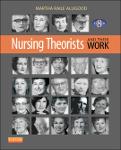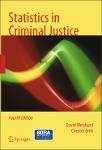Search
Author
- Quốc Hội (4)
- Alligood, Martha Raile (1)
- Bonvin, Jean-Michel (1)
- Border, Mexican (1)
- next >
Subject
- Luật (3)
- 361/QĐ-BYT (1)
- Bảo hiểm y tế (1)
- bệnh cơ xương khớp (1)
- next >
Has File(s)
- true (13)
Search Results
This book is a tribute to nursing theorists and a classic in theoretical nursing literature. It presents many major thinkers in nursing, reviews their important knowledge-building ideas, lists their publications, and points the reader to those using the works and writing about them in their own theoretical publications.
Unit I introduces the text with a brief history of nursing knowledge development and its significance to the
discipline and practice of the profession in Chapter 1. Other chapters in Unit I discuss the history, philosophy of science and the framework for analysis used throughout the text, logical reasoning and theory development processes, and the structure of knowledge and types of knowledge within that structure. Ten works from earlier editions of Nursing Theoris... |
This book examines public attitudes to the death penalty in Japan, focusing on knowledge and trust-based attitudinal factors relating to support for, and opposition to, the death penalty. A mixed-method approach was used. Quantitative and qualitative surveys were mounted to assess Japanese death penalty attitudes. The main findings show that death penalty attitudes are not fixed but fluid. Information has a significant impact on reducing support for the death penalty while retributive attitudes are associated with support. This book offers a new conceptual framework in understanding the death penalty without replying on the usual human rights approach, which can be widely applied not just to Japan but to other retentionist countries. |
Hệ thống 13 tiêu chuẩn thẩm định giá Việt Nam và quốc tế |
This volume addresses the conditions allowing the transformation of specific childrens rights into capabilities in settings as different as children’s parliaments, organized leisure activities, contexts of vulnerability, children in care. It addresses theoretical questions linked to children’s agency and reflexivity, education, the life cycle perspective, child participation, evolving capabilities and citizenship. The volume highlights important issues that have to be taken into account for the implementation of human rights and the development of peoples’ capabilities. The focus on children’s capabilities along a rights-based approach is an inspiring perspective that researchers and practitioners in the field of human rights would like to deepen. |
Statistics in Criminal Justice takes an approach that emphasizes the application and interpretation of statistics in research in crime and justice. This text is meant for both students and researchers who want to gain a basic understanding of common statistical methods used in this field. In general, the text relies on a building-block approach, meaning that each chapter helps to prepare the student for the chapters that follow. It also means that the level of sophistication of the text increases as the text progresses. Throughout the text there is an emphasis on comprehension and interpretation, rather than computation. However, as the statistical methods discussed become more complex and demanding to compute, there is increasing use and integration of statistical software. This ap... |
This brief fills a gap in the studies of organized crime in Mexico (Kan 2012, Ríos 2011, Dell 2011) by documenting and mapping the post-2008 assassination of Mexican border police chiefs. It traces out a “systematic” of law-enforcement assassination in Northern Tier Mexico, showing how the selective, often sequential, hits by cartels on chiefs in border towns and along key drug-trafficking corridors has proven an effective strategy by organized crime elements to serve several goals: (1) to retaliate for federal, state and local prosecution, (2) to try and neutralize police chiefs, (3) to achieve intermittent local governance and/or to seed corrupt police chiefs at the municipal level, and, (4) to reduce local governmental capacity to obtain greater freedom for movement of goods. It ... |









